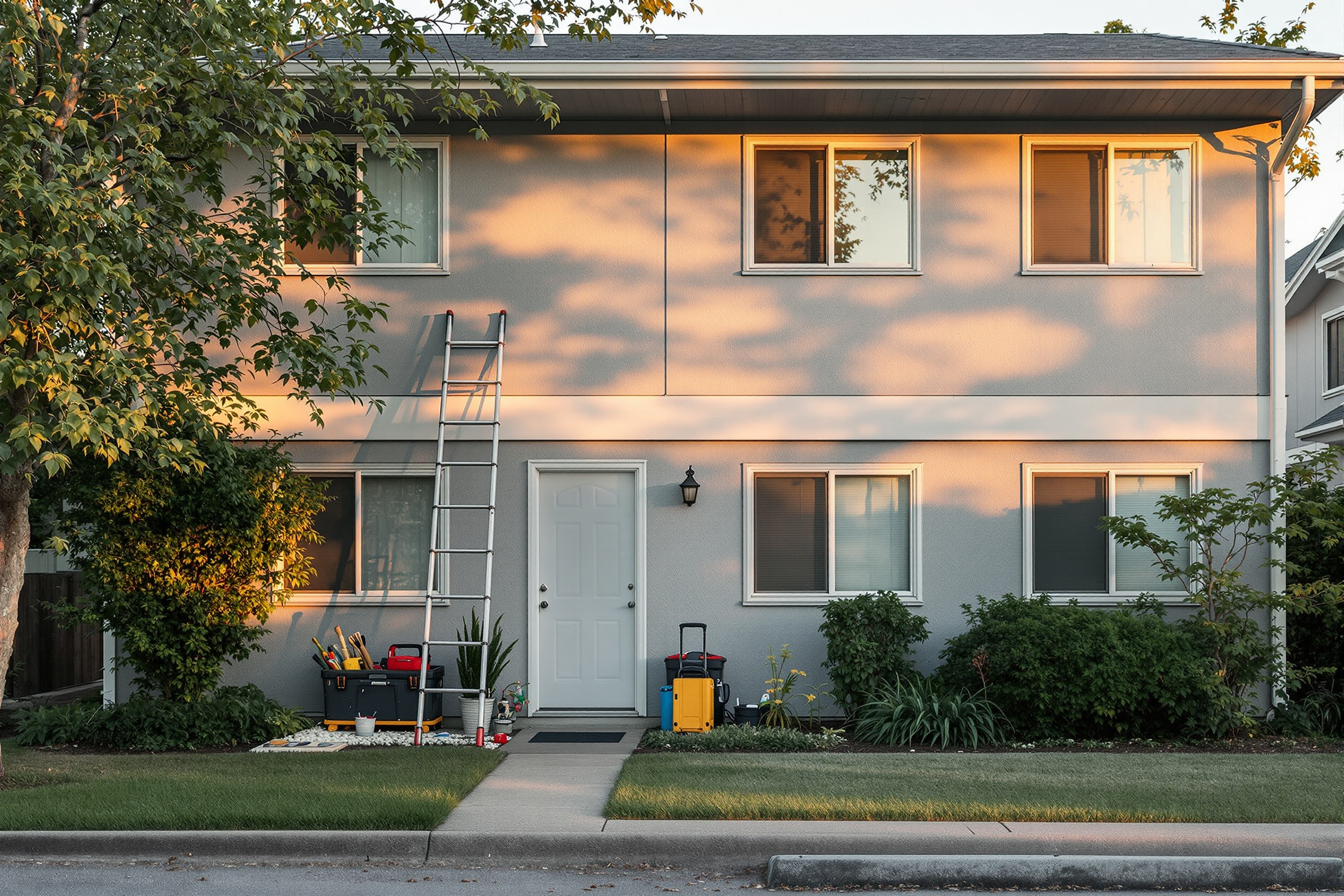Trying to make sure your tenants are following the rules, paying their utility bills on time, and covering their fair share of the costs?
This is where a landlord-tenant utility agreement is essential. A clear and legally binding utility agreement can help landlords protect their rights and interests while providing tenants peace of mind.
This article explores how to create an effective utility agreement and shares additional clauses landlords should know about and potentially include in a lease agreement. Plus, you’ll find a landlord-tenant utility agreement template you can download for free.
What Is a Landlord-Tenant Utility Agreement?
A landlord-tenant utility agreement is a contract in which tenants agree to cover utility costs, such as water, gas, and electricity. The landlord typically provides estimates of the expected bills and takes care of any setup or maintenance associated with these services.
In some cases, tenants may be obligated to pay utilities in addition to their rent. It’s crucial that the agreement clearly defines who is responsible for covering specific utilities, late payment fees, disconnection charges, and any other related matters.
The agreement can also include clauses that allow for additional payments if monthly utility charges exceed a certain amount.
Utilities typically found in a residential rental property include:
- Water
- Gas
- Electricity
- Sewer/Waste
- Trash
- Cable/Internet

Who Is Usually Responsible for Paying Utilities?
The responsibility for utility expenses typically depends on the type of rental property. For example, in a single-family home with one tenant, the decision may be easy—leave the cost of utilities to the tenant or include them in the rental.
For multi-family properties, the situation differs slightly. With multiple tenants, landlords must decide which utilities they will cover (if any), especially if one master meter or account is servicing the entire property for certain utilities such as water, sewer, and trash collection.
Property owners often have the option of keeping utility accounts under their name and pricing the usage into each tenant's rental fee. This benefits tenants since they no longer need to take care of these payments individually. However, it can be tricky for landlords if tenants’ utility usage exceeds the amount added to the total rent price.
A second approach is to install a submeter for utility purposes. Submeters are used frequently for utilities limited to only one meter, like water. With this setup, every tenant can have their own account and track their usage and bills. They are responsible for paying these costs, so landlords don't bear any additional out-of-pocket expenditures.
What to Include in the Utility Agreement
Crafting a utility agreement does not require the services of a high-priced attorney. You can easily find free or paid templates online or create one from scratch. To make your contract legally binding, it should include five essential sections.
Overview
The main section of a landlord-tenant utility agreement should describe the utilities provided, who is responsible for payment, and when the agreement begins and ends.
Details of Services
This section should outline the services provided, such as electricity, gas, water, sewer, heater/cooler, garbage collection, and internet. It should also include the metering system used and any restrictions on usage (e.g., number of occupants).
Payment and Billing
This section should specify whether the landlord or tenant is responsible for paying each utility bill. It should also include how much the rent will increase if the tenant incurs additional charges (e.g., late fees), the payment method accepted (e.g., check or money order), and when payment is due.
Start and End Dates
This section should provide a start date for when the agreement goes into effect and an end date for when it will no longer be valid. It should also specify when either party can terminate the utility agreement early with adequate notice before the end date.
Signature
Both the landlord and tenant should sign and date the document. These signatures serve as proof that both parties agree to the terms and conditions of the utility agreement.
Free Landlord-Tenant Utility Agreement Template
If you need a utility agreement for your rental property, download our free, easy-to-use template and customize it to meet your specific requirements. With just a few clicks, you'll have everything you need for a practical and effective utility agreement.

After clicking the link, select "File" at the top left-hand corner of the page, select "Download," and choose your preferred document format.
The Benefits of Having a Written Utility Contract
A written utility contract offers several benefits to both landlords and tenants.
For landlords, a well-crafted agreement clarifies the expectations of both parties, as well as legal protection if disputes arise. It also sets forth an organized record of all rental obligations, like rent payments and services provided by the landlord.
For tenants, a utility contract helps ensure all services are provided following agreed-upon terms and establishes an understanding of the costs associated with such services. A written agreement also gives tenants a definitive document outlining their rights and responsibilities when renting from a landlord.
Tips for Creating an Effective Utility Agreement
Crafting an effective utility agreement is essential for landlords who want to ensure professional and competent management of their rental properties. Here is a list of tips to help landlords create an effective utility agreement.
- Draft an agreement with clear language and definitions.
- Ensure all parties involved understand the contract and agree with its terms.
- Include specific details such as rent amounts, utility services provided, payment schedules, and any applicable late fees or penalties.
- Review your state landlord-tenant laws to verify that all terms outlined in the agreement are allowed.
- Document the date both parties sign the contract along with other related information, such as signatures from both landlord and tenant(s).
- Establish a process for handling disputes or disagreements following local laws and regulations.
Other Common Lease Addendums
Landlords should consider other standard lease addendums when drafting a residential rental contract to provide clarity and additional protection. Here is a list of some of the most common clauses a landlord can include.
Pet Policy
A pet policy outlines the rules for owning or having pets on the property, such as the maximum number, breeds, and size restrictions.
No Smoking Policy
This clause outlines any smoking prohibitions on or within the premises and specifies actions a landlord may take when tenants are in violation.
Roommate Addendum
This clause outlines whether roommates are allowed, their behavior, any additional security deposits required, and procedures for moving out. It can also specify the rules all roommates must follow regarding overnight guests or pets on the property.
Subletting Addendum
Subletting is a rental agreement where the tenant leases their unit to another individual, who then becomes the new tenant. The original tenant is still responsible for paying rent and covering any damages incurred by the subletter. This clause lays out the rules and procedures for tenants subletting the property.
Parking Policy
A parking addendum is typically used in multifamily properties because it outlines the regulations and guidelines all tenants must follow. It explains how many spaces are available, who can park which vehicles and where, and any parking fees or violations.
This clause can also specify the procedure for towing or booting a vehicle in case of a violation.
Antenna or Satellite Dishes Clause
This clause outlines the expectations for installing antennas or satellite dishes and any applicable rules or regulations.
Home Occupation Clause
This addendum allows the operation of certain home businesses in the rental unit under specified conditions.
Small Appliances Clause
This clause lists any small appliances (e.g., air conditioners and dehumidifiers) a tenant can install in the rental unit and the procedure for their use and removal.
Air-Conditioning Clause
This clause specifies the type of air-conditioning unit(s) that can be installed in the rental unit and outlines any applicable regulations.
Landscaping Addendum
This clause outlines required lawn and landscaping maintenance and the rules for installing flower beds, trees, and shrubs on the premises.
Hot Tub and Swimming Pool Rules
This clause explains the rules that apply to swimming pools or hot tubs on the property, including size restrictions, hours of operation, and safety requirements.
Noise/Disturbance Clause
This clause defines acceptable noise levels within the property boundaries and sets the rules regarding large gatherings and loud music.
Property Damage Policy
This policy specifies that the tenant shall be liable for all property damage beyond normal wear and tear caused by themselves or their guests not covered by the landlord's insurance.
Tenants are responsible for repairs or replacing any items damaged during their tenancy. A landlord may also require a tenant to obtain renters insurance unless prohibited from doing so by local or state law.







